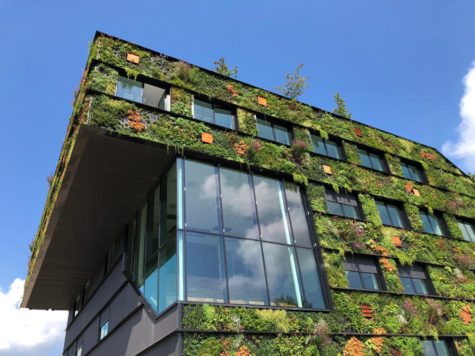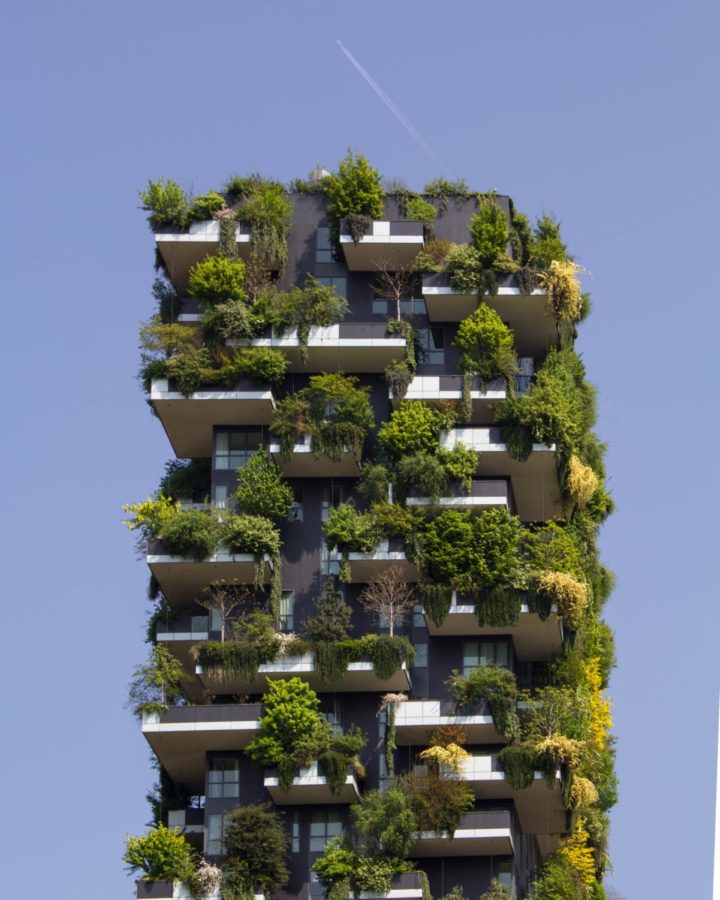The Legacy of Sustainable Architecture, For Your Generation and Mine
The ability of sustainable architecture to meet environmental preservation must be done in an efficient, accessible, and economically friendly manner.
Bosco Verticale, also known as the Vertical Forest, is a sustainable residential structure in Milan, Italy, that highlights the importance of adding sustainability into the daily lives of people.
The basis of every society is its infrastructure, the way communities interact, how people go about their daily lives, and how successful we as a group of people will be over time. With the current technological advancements that humans have made, our infrastructure is nothing short of impressive, but the question that must be asked is what type of legacy will it leave? Will the buildings we have created serve a purpose other than to make our cities look aesthetically pleasing? Will the infrastructure that we have idolized help to care for the Earth, so that further generations can enjoy the planet as well?
We are currently dealing with an immensely impactful climate crisis, with 87% of the population living in areas that exceed the World Health Organization’s air quality guidelines, the sea level rising about 8 inches in the last century, and the ozone layer depleting every year. To make matters worse, an astounding 11% of total global CO2 emissions stem from materials and constructions, revealing that the current infrastructure we are working to build upon might not be the impressive investment that we currently believe it would be.
We can attribute this 11% to the unsustainable practices we have adapted to cut corners in terms of time, money, and labor. But by cutting corners, we make our circumstances worse, and in doing so, we are losing the valuable time that we need to beat this climate crisis. It is important to remember that the Green New Deal calls for carbon emissions to reach net-zero before 2050. And if we do not start working to fix this 11% and other climate problems, there will be no Earth. Without an Earth, in the first place, we will have nowhere to put our buildings and designs, so it is imperative that we meet these environmental goals as efficiently as possible.
To begin we need to move away from just focusing on the aesthetics of our infrastructure. Although many of our skyscrapers are undeniably beautiful and admired for their shock appeal, they do not serve a greater purpose. Many of these large-scaled buildings utilize materials, especially steel, aluminum, and plastics, that already have a substantial carbon footprint and are overall proven to be too expensive at times.

(Jw. / Unsplash )
Modern architecture is arranged on the land in a way where there is limited interaction between the environment it has been put on and the structure. This way of building structures is detrimental to the way society thinks about the environment, as they have failed to connect with it during their daily lives. Across the world, you can often see that buildings are next to forests in a way that doesn’t create a symbiotic relationship for all species and the environment in which this structure has been built in.
This world was created for us to coexist with the land and other species that habitat it. It is our duty to limit our greed and selfishness, and instead fight for a better, greener cause — that of sustainable architecture.
Kristin Honendal from ‘The Spruce’ describes it perfectly: “Sustainable architecture is a general term that refers to buildings designed to limit humanity’s impact on the environment.” Sustainable architecture allows us to interact with the Earth in a way we have not been able to do since the first hundred years of humans inhabiting the planet. In a sense, we are resorting to going back to our original tendencies, but in a way where we are utilizing modern technology and our access to resources more. It is an appreciation for the practices that we used to have and the implementation of tools that we now have.
Not only does architecture need to be long lasting, but it also needs to be accessible to people of all backgrounds. Our infrastructure has long segregated communities, to the point where there is a lack of availability of necessary resources, and there is overall inequality across the board in living conditions. Making sustainable architecture a norm across all of our cities would lead to inclusivity being the norm, and coming together to live our lives in a more green way.
Sustainable architecture carefully plans out how a specific structure will interact with the surrounding environment and communities. Not every structure will fit every community’s needs, and that is why we must prioritize a balance between human satisfaction as well as environmental preservation.
To find this balance between human satisfaction and environmental preservation, we must also consider expenses, however. How is sustainable architecture an investment both in the short term and the long term?
The general consensus behind sustainable building is that there are lower risks, longer building lifetimes, and an overall increased asset value. Not only that, but according to the World Green Building Council, there will be 25 to 35% in energy savings, as well as 39% of water savings, compared to conventional buildings. A study at the Pennsylvania Department of Environmental Protection’s Cambria Office Building dived into the economic benefits of the substitution of sustainable materials into building. When redoing parts of the building, the developer was hesitant to upgrade to double Low-E windows, which would aid in reducing heat loss and increase the amount of solar energy captured. However, he was surprised to find out that with these windows, the perimeter-heating zone could be eliminated for a savings of $15,000, the heat pumps could be downsized for more savings of $10,000, and that the added space was worth up to $5,000.
When built correctly, sustainable structures have proven to support themselves over a long period of time, requiring more management than maintenance. Sustainable practices will push companies and businesses to reevaluate their business models and find that they are wasting money on structures that will not meet the needs of the people or the environment with time. By making the switch, they can save money, and they can also become an ally to moral practices.
The biggest example at the moment of sustainable architecture is, of course, sustainable cities. All over the world, leaders have come together to use their funds to invest in green cities and buildings. In the simplest terms, sustainable cities are just sustainable architecture taken to a larger scale. These cities give us a direct visual representation of how several communities, businesses, and more can interact with each other, all while being sustainable. By creating the foundation of sustainable infrastructure for the people, it forces society to shift how they view climate change as a whole. Sustainable cities are the skeleton for an educated and mindful society in which people are focused on playing their part on an individual level, as these cities give an example to the general public on how sustainable practices can be put into a bigger effect.
In all, sustainable architecture is the best investment for the human race. As a whole, we have long burdened the Earth for our needs and gains, and it is time we focus on giving back and fixing our wrongdoings while promoting safer, alternative methods in urban places around the globe.
Sustainable architecture allows us to interact with the Earth in a way we have not been able to do since the first hundred years of humans inhabiting the planet. In a sense, we are resorting to going back to our original tendencies, but in a way where we are utilizing modern technology and our access to resources more. It is an appreciation for the practices that we used to have and the implementation of tools that we now have.
Sarah Infante is a Staff Reporter for ‘The Science Survey’. This is her first year on the journalism staff, and she finds herself fortunate to be able...

